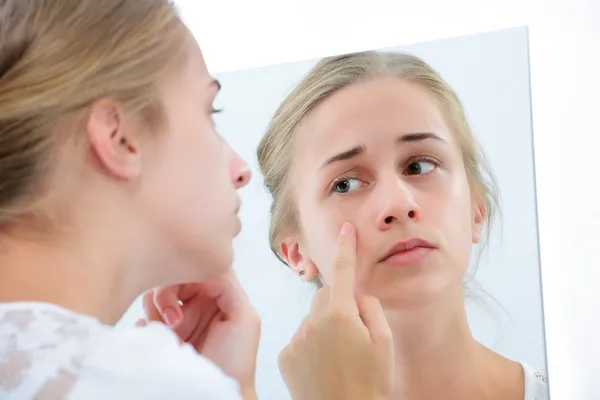When a mysterious lump shows up on your skin, it is alarming. This condition is common and, often, harmless and does not need immediate medical treatment. Skin lumps and bumps show up on top or below your skin. They vary in appearances, such as skin tags, cysts, lipomas, warts, dermatofibromas, and enlarged lymph nodes. Yet, some bumps are painful and a symptom of a more severe condition.
Identify Skin Lumps – 3 Categories
Certain characteristics define a skin lump as a soft, firm, red and inflamed, growing and painful. It will not exhibit all the same characteristics as other growths. The concern is a common reaction when you notice a raised bump on your body, but it is most likely benign. The three different categories of skin lumps are:
- Malignant are cancerous and would not need treatment in the short-term
- Inflammatory or infectious requires treatment but is not life-threatening
- Benign, noncancerous lumps may require no treatment.
Here is a look at some of the most common skin bumps and how to distinguish between them.
Cysts
A cyst shows up as an enclosed area of skin tissue underneath the outermost layer of skin. It usually contains fluid and is oval with a defined border. The face and back are common areas where cysts appear. One of the main identifying features of a cyst is a lump with a central pore. It occurs when the skin has not developed and starts to fold within to form the pore. Every cyst will not have a distinctive visible pore. Cysts can happen for a variety of reasons, but it’s suggested not to pop them to reduce the chance of an infection. If you go to a doctor’s office, they can drain it for you.
Lipomas
A lipoma is a fatty mass that grows under the skin and moves freely when applying pressure. They are occasionally hereditary but can grow for a variety of reasons. It is rarely cancerous and can appear on any part of your body. Lipomas feel soft and mushy and do not have well-defined edges. They are usually not painful and can take a wait-and-see approach.
Lipomas also grow slowly and increase in size. If you get one in an uncomfortable location, your doctor can surgically remove the lump.
Warts
A wart appears on the skin as a small, fleshy bump and is contagious. It occurs from various strains of human papillomaviruses (HPV). The rough, skin-colored lumps can appear on the hands, face, feet, genitals, and knees. You can get warts from touching someone with the virus.
Dermatofibromas
If you notice small, red-raised bumps on your legs, then you may have dermatofibromas. They are rock hard and firm. Dermatofibromas are benign nodules but can develop into dermatofibrosarcoma, which is a type of skin cancer. They usually do not cause symptoms other than appearance on your skin. Liquid nitrogen therapy and steroid injections are treatment options to reduce the bumps in size.
Enlarged Lymph Nodes
The body’s immune system contains lymph nodes. They are in different body locations, such as below your chin in your neck, groin, and armpit. These areas can become enlarged if you get sick because of cells gathering in the area to fight off illness. Swollen lymph nodes respond to your body fighting a virus or infection.
Get an Examination
You can take out the guesswork by going to a dermatologist for a physical examination. He will take a biopsy of the lump to identify your skin condition. A biopsy removes a tissue sample from the area, and medical staff sends it to the laboratory for testing. If the skin bump is in a problematic location, then your dermatologist will have to open up the skin under anesthesia.
After diagnosing the condition, your dermatologist will recommend a treatment plan. Treatment options may include:
- Draining the cyst and removing the sac.
- Laser removal.
- Injecting medication into the lump.
Healing the Body from Within
It does not matter what skin issue you suffer from; the only way to make your skin better is by healing your body from within. Some skin issues occur from lack of nutrition, hormonal imbalance, and bad habits. Vitamins for cysts help treat your skin from within and give you a natural alternative for treatment. Some skin lumps will reduce over time, but using lotions or medicine can help them reduce quicker.
They can reduce the size of your cysts by using your body’s own detoxification pathways. These vitamins are most effective when living a healthy lifestyle.
Skin bumps develop for many reasons or no apparent reasons. They are also more common in men than women. It would help if you informed your doctor about any skin conditions so he can check for signs of serious problems.
AUTHOR’S BIO:
Stephanie Caroline Snyder graduated from The University of Florida in 2018; she majored in Communications with a minor in mass media. Currently, she is an Author and a Freelance Internet Writer, and a Blogger. To learn more about beneficial Vitamins for cysts, Stephanie recommends RemedyNutrition.








